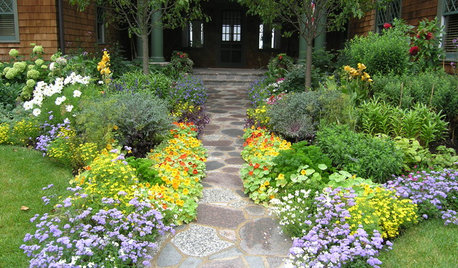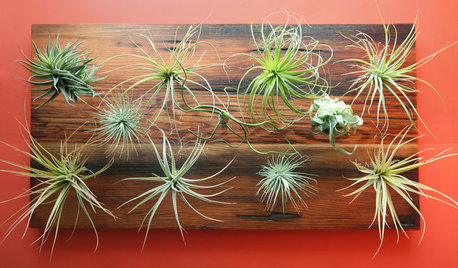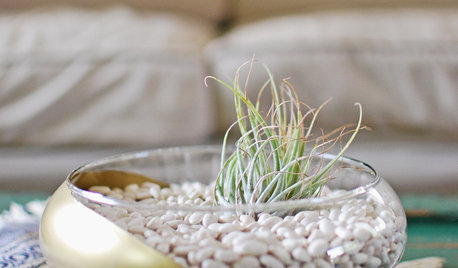Air Plant help please
savannaicus
9 years ago
Related Stories

GARDENING GUIDESGreat Design Plant: Ceanothus Pleases With Nectar and Fragrant Blooms
West Coast natives: The blue flowers of drought-tolerant ceanothus draw the eye and help support local wildlife too
Full Story
GARDENING GUIDESPathway Plantings That Please the Senses
Add some color, life and intrigue beside your sidewalk with these 7 suggestions
Full Story
GARDENING GUIDESGreat Design Plant: Silphium Perfoliatum Pleases Wildlife
Cup plant provides structure, cover, food and water to help attract and sustain wildlife in the eastern North American garden
Full Story
HOUSEPLANTSMother-in-Law's Tongue: Surprisingly Easy to Please
This low-maintenance, high-impact houseplant fits in with any design and can clear the air, too
Full Story
HOME OFFICESQuiet, Please! How to Cut Noise Pollution at Home
Leaf blowers, trucks or noisy neighbors driving you berserk? These sound-reduction strategies can help you hush things up
Full Story
GARDENING GUIDESGreat Design Plant: Snowberry Pleases Year-Round
Bright spring foliage, pretty summer flowers, white berries in winter ... Symphoricarpos albus is a sight to behold in every season
Full Story
PETS6 Ways to Help Your Dog and Landscape Play Nicely Together
Keep your prized plantings intact and your dog happy too, with this wisdom from an expert gardener and dog guardian
Full Story
GARDENING GUIDES8 Unthirsty Plants Help You Save Water in Style
Spend less effort and money on your landscape with drought-tolerant and native plants that liven up your yard
Full Story
URBAN GARDENSDirt Optional: Amazing Air Plants for Wall or Tree
Succulents and air plants are stunning on winter walls — and the Christmas tree
Full Story
CRAFTSBowl Over Guests With a DIY Air Plant Terrarium
Air plants don't need much attention, but they'll get it anyway with a snazzy, gilded home you make yourself
Full Story


Photo Synthesis
savannaicusOriginal Author
Related Professionals
Saint Louis Park Landscape Architects & Landscape Designers · Allentown Landscape Contractors · Alamo Landscape Contractors · Aloha Landscape Contractors · Cedar Hill Landscape Contractors · Firestone Landscape Contractors · Fort Mill Landscape Contractors · Homewood Landscape Contractors · La Mirada Landscape Contractors · Lorain Landscape Contractors · Mastic Beach Landscape Contractors · New Braunfels Landscape Contractors · Northport Landscape Contractors · Vineyard Landscape Contractors · Struthers Interior Designers & Decoratorspaul_
auron22
Embothrium
savannaicusOriginal Author
lynngun
savannaicusOriginal Author
auron22